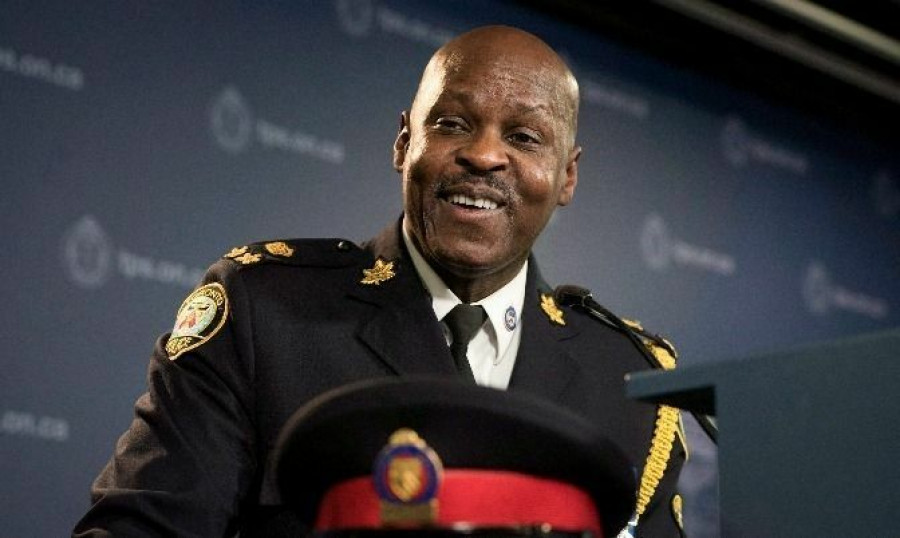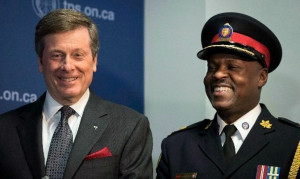His victory made him a powerful symbol of change. But statements about the police service’s carding practices that he made recently show that he is resistant to change. He is a traditionalist from whom little change can be expected.
Chief Saunders brings operational, tactical, and strategic intelligence to the job, but he faces an uphill battle as the new top cop. He will have a difficult job bridging the divide between the TPS and the diverse communities it serves. The relationship between the TPS and the Black community has long been strained. Unlike the Toronto Anti-Violence Intervention Strategy (TAVIS), a community mobilization scheme intended to curb crime and promote community safety, the carding practices of the TPS have had a disproportionate impact on the Black community. Blacks—and Black men in particular—have had their civil liberties violated under the guise of public safety. Like any instrument of oppression, carding is not simply an act of individual police officers; it springs out of deep, underlying institutional discrimination. For Chief Saunders, addressing this continuing legacy of social injustice should be paramount.
Nothing short of bold and urgent action is required to counter the prevailing institutional view of carding as an effective law enforcement tool. There is no evidence to corroborate the chief’s comments about the necessity of carding for ensuring public safety. Chief Saunders must be careful to not trivialize the experiences and perspectives of racialized groups—especially young Black men—by prioritizing ideology over good evidence and critical thinking. His comments undermine the work and message of those calling for the elimination of carding on the grounds that the policy selectively discriminates against Black people, and violates human rights law and basic human decency.
Although the appointment of a Black police chief looks like a triumph for the Black community, members of that community must exercise caution and not pin all of their hopes and aspirations on the back of one Black public official. The sad legacy of institutional discrimination that any new chief of police—a Black one for that matter—would inherit in Toronto is not of their making. It will take meaningful reforms in policing practices and policies, and not just cultural sensitivity, to ameliorate the problem.
It will be important for Chief Saunders to examine the structural and cultural factors at the core of the oppression experienced by some groups. As a public service leader, he has a duty to the most vulnerable and disadvantaged. He will be expected to demonstrate sensitivity to the plight of people at the social and economic fringes of society—the poor, homeless, LGBTQ, and racialized groups—all those subject to repeated, violent acts and the message that their lives do not matter.
In principle, these groups’ experiences of oppression would move the chief and other public service leaders to radical action. But if history and current world events are any indication, such an egalitarian logic of social democracy is far from being realized not only in Canada but all over the Western world. The chief’s ability to respond appropriately to the concerns of these groups will be a defining moment of his leadership.
Expectations are high that Chief Saunders, a Black man who broke through the police brass ceiling, will make sweeping changes. Such public expectations may be misplaced, given that the chief’s most loyal supporters—those with power and influence—are the same ones that could suppress much-needed institutional change. With little to no change on the horizon, the Black community—and other concerned communities—will need to remain vigilant in their continued struggle for transforming the Toronto Police Service. Now is not the time for complacency.










